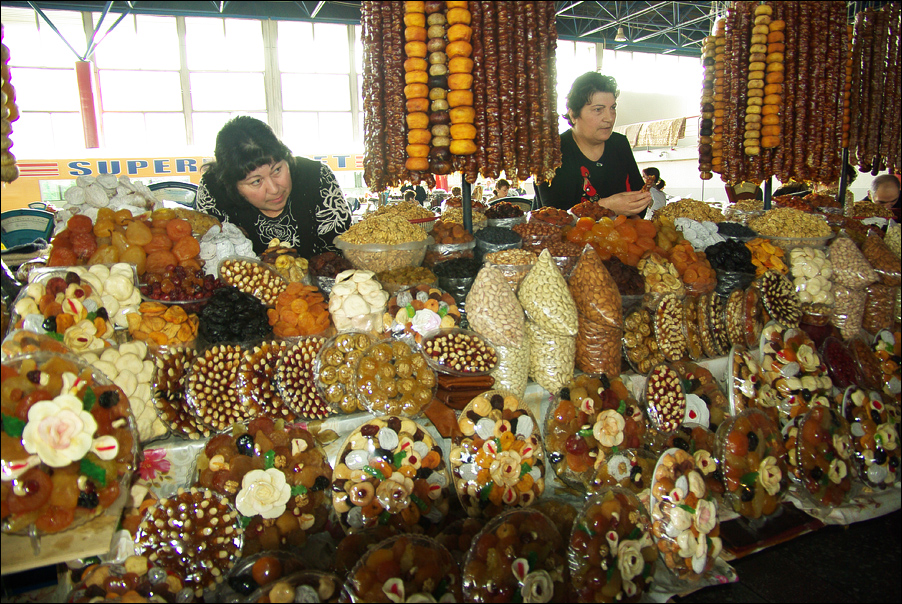In 2015, the recent tendency of the contraction in consumer demand has become a consequence of the decline in the purchasing power of the Armenian population. The decline in retail turnover in current prices has became one of the consequences of the decline in purchasing power of the population. According to official statistics, the trade turnover in 2015 declined 5.6%. The main share of the reduction in trade is in the retail trade, which declined 4.6%. A reduction in demand for food products, including bread and electricity consumption, was recorded. This trend also includes communications services, where revenues fell by 5.8% in comparison with last year.
According to economists, the monopoly system of the economy, which is further strengthened with the help of the country's authorities, has led to a significant weakening of small and medium-sized business. The contraction in consumer demand means a reduction in the volume of business – entrepreneurs cannot carry out their services or sell goods through trade. SME development could be the basis for an adequate level of purchasing power of the population, but the level of purchasing power began to be determined largely by transfers from Russia due to the significant problems in SMEs.
Since last year, money transfers from Russia, which support consumer demand in Armenia and were one of the main sources of GDP growth, have begun to decline. The reason for this was the difficult situation in Russia, primarily the devaluation of the ruble. This year the volume of remittances sent home by Armenian migrants from Russia decreased 38-40% in comparison with 2014. Previously, the amount of these funds was estimated at the level of $2 billion a year.
Trends affecting the purchasing power of the population also have a direct impact on the banking system. According to a representative of the Union of Armenian Banks, Samvel Chzmachyan, the entire economic system of the banks cannot remain aloof from the existing problems. Thus, according to the Union of Armenian Banks, the net profit of the banking system of Armenia in January-September 2015 decreased by 53.3% in comparison with the same period last year. The decline of volumes of private transfers to Armenia affected not only the purchasing power of the population, but also the purchasing power of Armenian manufacturers and exporters, which increased the amount of non-performing loans.

The above chain, which includes the negative impact of monopolies on the development of SMEs, and as a consequence, the huge impact on the economy of the transfers from Russia, the reduction of which struck at consumer demand, manifested in New Year's Eve. A significant increase in prices wasn't recorded in Armenia. According to official data, prices grew by only 1.2% in November-December. Moreover, in November and December, the average prices of many fruits increased by 15.7% in comparison with last year, prices of vegetables and potatoes by 9.4%, eggs by 19.2%. According to economists, during the last week before the New Year, if a price increase occurs, then it will be negligible. This is despite the fact that in previous years on the eve of the New Year holidays goods have steadily risen in price.
According to the chairman of the National Association of Consumers of Armenia, Melita Hakobyan, the slight increase in prices can be explained by the higher tariffs for gas and electricity and is due to the low purchasing power of the population. "As an example, I can name you the relative passivity of the market this year, while in previous years it was difficult to enter a store due to the influx of customers. A lack of buyers is the reason for the absence of sharp price spikes in the consumer market."
Constant migration also plays a role in reducing consumer demand. In April, experts pointed out that the decline in the production of bread in Armenia was due to the decrease in the population. The slowdown in prices in anticipation of the New Year indicates not only a drop in demand, but in general the reduction of revenues to the economy, which creates a new set of problems for the country, which is already experiencing a difficult socio-economic situation.
According to experts, the level of poverty in Armenia will increase. According to a report by the National Statistical Service 'Social Snapshot and Poverty in Armenia', which summarizes the results of a study of household living conditions in 2014, the number of poor people in the cities of the country is 64%, in rural areas 36%, in the capital 28%. Poor citizens are those whose monthly income does not exceed 40 thousand drams or $83, and the extremely poor are those whose income does not exceed 23 thousand drams, or $48.






